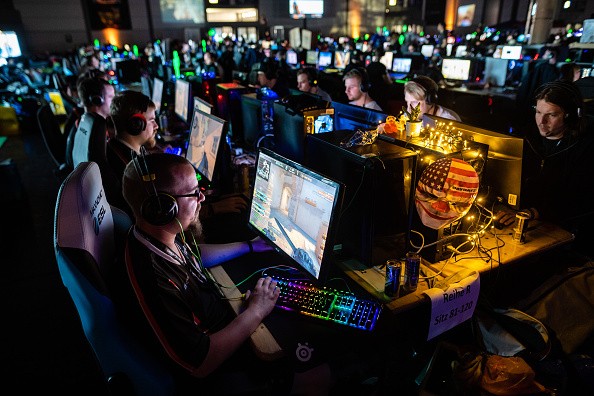When looking for the best gaming monitors on the market, you need to consider a lot of things as with buying other electronics. But perhaps one factor trumps everything else in your search: resolution. For one, there are three main resolutions to choose from: 1080p, 1440p, and 4K.

If you're a gamer with a gaming PC or console, which resolution should you go for? Well, this article aims to answer that question. So without further ado, let's begin.
All Of The Pixels
Tech YouTube channel Hardware Unboxed tackled this very topic, trying to discern the balance between price, performance, and overall value of going for either of the three main resolutions for gaming monitors. And their findings are very telling:
But first off, let's talk about each of the three resolutions. 1080p or Full HD is obviously the lowest resolution out of them all, but is far more affordable and easier to get for anyone. The next step up is 1440p or Quad HD (QHD), which is a resolution almost always exclusive to PC gaming displays. And finally, 4K or Ultra HD is the modern "gold standard" for both gaming monitors and TVs.
Each resolution bumps up in pixel count and are therefore able to produce a clearer picture over the other. The bare minimum at this point for HD content is 1080p, and you only want to go beyond from there. But that's only a tiny part of this discussion.
Why 1080p?
Some people (perhaps only elitists at this point) are likely going to laugh at you for buying a 1080p monitor in 2022. But let them laugh, because Full HD displays are still the predominant PC gaming displays all over the world. According to the Steam Hardware Survey, a hefty 67% of all Steam users still use 1920 x 1080 as their primary resolution. Even those that go multi-monitor are still going for 1080p panels almost 69 percent of the time.
The main reason is simple: affordability and widespread availability. A lot of the best gaming monitors at 1080p are priced at under $200. That's a very, very tough price point to beat. This is also considering how PC gaming enthusiasts would like to save the $50 to $100 premium they have to pay for a 1440p or 4K monitor and put it somewhere else, like a faster graphics card.
To cap things off, a lot of great 1080p monitors also offer some of the highest refresh rates out there. You could get a freaking 360Hz display and basically never go experience lag again. But there is still a price premium on that kind of hardware, as some panels with super-high refresh rates basically cost as much as a 4K screen.
Why 1440p?
On the next step up in our best gaming monitors discussion, we take a look at QHD displays. As per the original Hardware Unboxed video, 1440p is the "sweet spot" for PC gaming and console gaming these days. It provides a decent balance between fidelity and performance, and often, the jump in price proves more worth it than you think.

Take a 1080p 144Hz display, for example. A good model like the 24-inch ASUS VG248QG will set you back $189 on Amazon at the time of this writing. But step up to 1440p in the "budget" range, and you'll get something like the ASUS TUF 27-inch 165Hz, priced at $269. That's only an $80 premium, and you even get a higher refresh rate than before.
But of course, not everybody can actually afford to RUN games on QHD. So even if you got one of the best gaming monitors at this resolution, it's not worth it if your gaming system can't even run games at 1440p - much less at high refresh rates. So only go for 1440p if you absolutely know that your hardware can handle it. Otherwise, you could've just stuck to 1080p.
Why 4K?
Last but not least, 4K. One may argue that the truly best gaming monitors on the planet are at this resolution, while also offering high refresh rates and low latency. Furthermore, you actually have two choices at this resolution: TVs and actual, dedicated gaming displays.
Most of the time, gamers should really just stick to gaming monitors. That's it. The simplest reason is that these displays almost always have the lowest input lag, writes GameSpot. TVs have historically had high input lag and slowest response times, but newer model have been better - and thus, more expensive.
On the question of price over 1080p and 1440p, expect to pay way less for a 4K gaming monitor compared to a 4K "gaming TV." Gigabyte's M32UC 32-inch 4K gaming display costs $579 at Amazon right now, and it features a 144Hz refresh rate with an excellent 1ms response time (barely no input lag). A 4K gaming TV with the same specs, like the LG OLED65V1PUB (1ms response time, HDR, and 120Hz refresh rate) costs almost $1600 by comparison on Newegg. Yikes.
To cap this discussion off, driving a 4K gaming display (more so a high refresh rate one) requires the most powerful gaming hardware that aren't cheap too. A capable 4K gaming PC can cost you between $4000-$5000 to build. And a PS5 or Xbox Series X, while far cheaper, is still pretty darn expensive at around $800 a pop.
Conclusion
When looking for the best gaming monitors, resolution is key. If you only have a modest gaming system, go for 1080p or 1440p. But if money isn't an issue and you simply want the best visual experience you can buy, go for 4K. That's pretty much it.








